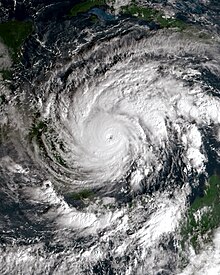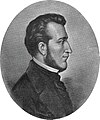Our website is made possible by displaying online advertisements to our visitors.
Please consider supporting us by disabling your ad blocker.
Portal:Honduras
The Honduras Portal
Republic of Honduras República de Honduras (Spanish) | |
|---|---|
Motto:
| |
| ISO 3166 code | HN |
Honduras, officially the Republic of Honduras, is a country in Central America. It is bordered to the west by Guatemala, to the southwest by El Salvador, to the southeast by Nicaragua, to the south by the Pacific Ocean at the Gulf of Fonseca, and to the north by the Gulf of Honduras, a large inlet of the Caribbean Sea. Its capital and largest city is Tegucigalpa.
Honduras was home to several important Mesoamerican cultures, most notably the Maya, before Spanish colonization in the sixteenth century. The Spanish introduced Catholicism and the now predominant Spanish language, along with numerous customs that have blended with the indigenous culture. Honduras became independent in 1821 and has since been a republic, although it has consistently endured much social strife and political instability, and remains one of the poorest countries in the Western Hemisphere. In 1960, the northern part of what was the Mosquito Coast was transferred from Nicaragua to Honduras by the International Court of Justice.
The nation's economy is primarily agricultural, making it especially vulnerable to natural disasters such as Hurricane Mitch in 1998. Honduras has a Human Development Index of 0.624, ranking 138th in the world. In 2022, according to the National Institute of Statistics of Honduras (INE), 73% of the country's population lived in poverty and 53% lived in extreme poverty. The lower class is primarily agriculturally based while wealth is concentrated in the country's urban centers. The country is one of the most economically unequal in Latin America. (Full article...)
Selected article -
Hurricane Iota was a devastating late-season tropical cyclone which caused severe damage to areas of Central America already devastated by Hurricane Eta two weeks prior. The 31st and final tropical cyclone, 30th named storm, 14th hurricane, and record-tying seventh major hurricane of the record-breaking 2020 Atlantic hurricane season, Iota originated as a tropical wave that moved into the Eastern Caribbean on 10 November. Over the next few days, the wave began to become better organized and by 13 November, it developed into a tropical depression north of Colombia. The depression strengthened into Tropical Storm Iota six hours later. The storm was initially impacted by some wind shear, but a center relocation and relaxed shear allowed Iota to quickly strengthen into a hurricane on 15 November, after which it underwent explosive intensification, peaking as a high-end Category 4 hurricane, with wind speeds of 155 mph (249 km/h). After weakening slightly, Iota made landfall in northeastern Nicaragua as a mid-range Category 4 hurricane, becoming the strongest recorded hurricane to make landfall in Nicaragua in November. Iota then rapidly weakened as it moved inland, dissipating on 18 November.
Iota's precursor disturbance generated flash flooding on several Caribbean islands. Hurricane watches and warnings were first issued on 14 November in parts of Colombia, Nicaragua, and Honduras, with the latter two countries still recovering from Eta. Heavy rains associated with a tropical wave and Iota brought heavy rainfall to parts of Colombia, leading to flash flooding and mudslides. Heavy rain fell on much of Nicaragua, widening flash flooding caused by the hurricane's high storm surge. Mudslides caused extensive damage and multiple deaths. At least 67 people were killed due to Iota, including at least 28 in Nicaragua and 16 in Honduras, among other countries. As many as 41 people were reported as missing. The preliminary estimate for the damage in Nicaragua was $564 million (2020 USD). Total damage estimates for the hurricane were set at $1.4 billion (2020 USD). (Full article...)
Interesting facts -
- ... that the British settlement of Black River on the Mosquito Coast of present-day Honduras was turned over to Spanish authorities on 29 August 1787 under the terms of the 1786 Convention of London?
- ... that samples of moon rock and lunar dust soil from the Apollo 11 and Apollo 17 missions, mounted on wooden plaque displays especially for Brazil, Canada, Cyprus, Honduras, Ireland, Malta, Netherlands, Nicaragua, Norway, Romania, Spain, and Sweden, plus the states of Alaska, Arkansas, California, Colorado, Delaware, Hawaii (pictured), Illinois, Missouri, Nebraska, New Jersey, New Mexico, New York, North Carolina, Oregon, and West Virginia, were later reported missing by many of the recipients?
- ... that Salomón Ibarra Mayorga, the lyricist of the Nicaraguan national anthem, was exiled to Honduras for his political activities but was reburied in Nicaragua after his death?
- ... that thanks to the song "Sopa de Caracol", the musical ensemble Banda Blanca became the best-known Honduran band?
Related portals
General images -
List articles

- Departments of Honduras
- List of cathedrals in Honduras
- List of companies of Honduras
- List of ecoregions in Honduras
- List of football clubs in Honduras
- List of Honduran departments by Human Development Index
- List of Hondurans
- List of Honduras-related topics
- List of national parks of Honduras
- List of political parties in Honduras
- List of presidents of Honduras
- List of rivers of Honduras
- List of wars involving Honduras
- Municipalities of Honduras
- Outline of Honduras
- Timeline of Tegucigalpa
Largest cities or towns
Topics
Map
Get involved
See WikiProject Honduras for editor resources and to collaborate with other editors on improving Wikipedia's Honduras-related articles.
Need help?
Do you have a question about Honduras that you can't find the answer to? Consider asking it at the Wikipedia reference desk.
Tasks
Did you know...
No recent additions
Associated Wikimedia
The following Wikimedia Foundation sister projects provide more on this subject:
-
Commons
Free media repository -
Wikibooks
Free textbooks and manuals -
Wikidata
Free knowledge base -
Wikinews
Free-content news -
Wikiquote
Collection of quotations -
Wikisource
Free-content library -
Wikiversity
Free learning tools -
Wikivoyage
Free travel guide -
Wiktionary
Dictionary and thesaurus
Sources
External media
Previous Page Next Page














































































































